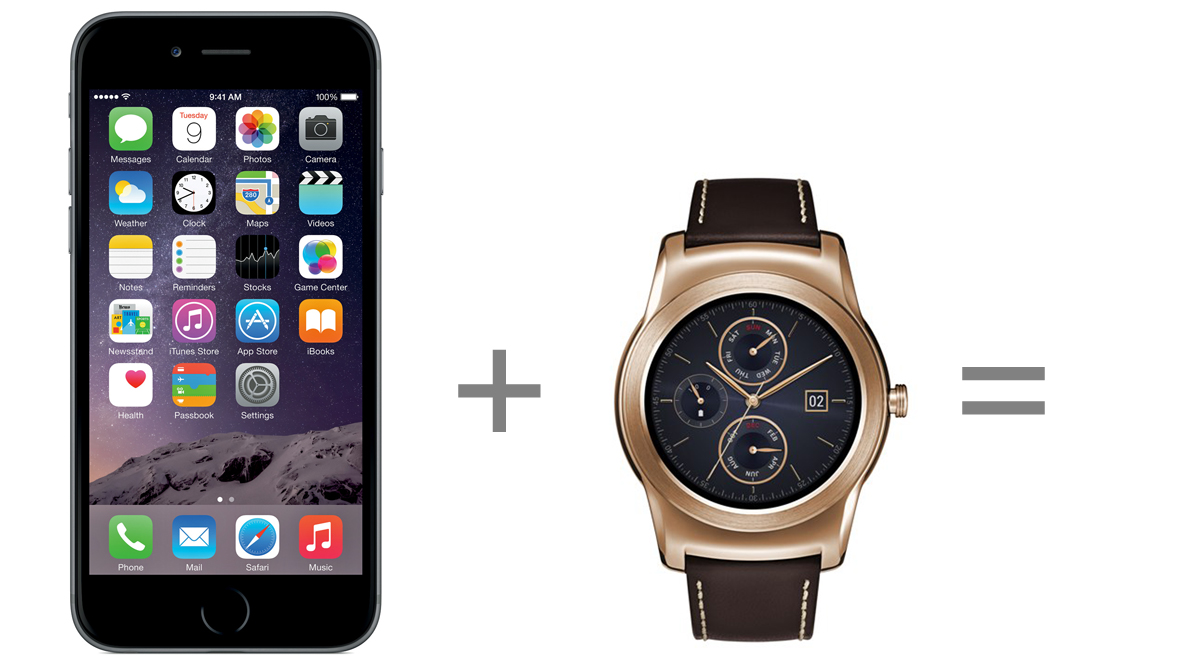Why doesn't Google just make Android Wear available on the iOS App Store, already?
Google wearables with Apple phones: the love that dare not speak its name

So is wearables the Next Big Thing or not? Apple won't break out sales figures for Watch, beyond describing them positively. We may never know for sure how many have sold if Apple ends up bracketing sales in the "miscellaneous" column, with Apple TVs, iPods and charging cables, but people are bandying around the word "failing", and that's not a word usually heard around Cupertino.
Admittedly, with Watches from £300 a pop, even the sketchy "estimate" that these reports are based on, of 5,000 units per day, equates to revenues of over 500 billion. That's the kind of "failure" we could all do with. But still.
Meanwhile, Android Wear sales show no sign of an uptick, and new, compatible watches are coming in a trickle not a flood - we recently sat down to update our Best Smartwatches list and were struggling to find nine of them that were new enough to be worthy of recommendation.
That's a shame because Wear is getting better. That's both in terms of the hardware - the LG Watch Urbane is a very pleasing looking thing, whilst Sony's Smart Watch 3 offers more functionality than the original Apple Watch OS, for a notably lower price. It's also making big software improvements, being able to communicate directly to other Wear watches and with an Android phone miles away, thanks to Wi-Fi.
The obvious use for the latter is that you can connect and talk to Google Now on your phone as it languishes upstairs in your house, while you linger downstairs. One other, more off-the-wall application is that you could, in theory, venture out wearing an Android Wear watch, but with an iPhone in your pocket.
This set me thinking.
Android Wear's problem is that Google's Wear, while compatible with Android phones, doesn't take Google's ethos of openness far enough. Various analysts have shown that there is a marked difference between who purchases an Android device, of which the average selling price is $256, and those who buy an iPhone, whose average price sits at over $650.
Get daily insight, inspiration and deals in your inbox
Sign up for breaking news, reviews, opinion, top tech deals, and more.
Buying an expensive watch is a luxury and Google wants to tap into the market of people who will spend $650 on a phone and then another $50 on accessories. This idea is also reinforced by app sales: quarter after quarter, Apple returns more to developers than Google, implying higher sales despite a smaller user base. Developers actively target iOS first because they know users will spend more on their apps, whether that be down to disposable income or something more intangible.
At present, the smartwatch market, such as it is, is falling to Apple. In China, especially, Apple is expanding rapidly - over 30 percent year-on-year - and many of those are potential Watch customers. Some have even called the Edition, which starts at $10,000, the "China Watch".
If Apple can steer the collective conversation about what a "smartwatch" should be and how it should act, Google will never stand a chance.
But there is an obvious way that Google can gain an edge. As a company that cherishes working with others - Android is available, for free, to all OEMs - it makes sense for Google to branch out and enable Android Wear on iPhone.
Max Slater-Robins has been writing about technology for nearly a decade at various outlets, covering the rise of the technology giants, trends in enterprise and SaaS companies, and much more besides. Originally from Suffolk, he currently lives in London and likes a good night out and walks in the countryside.